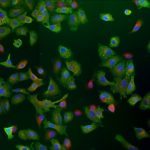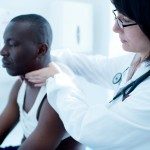Link to Pubmed [PMID] – 33860747
Link to HAL – pasteur-03236257
Link to DOI – 10.2807/1560-7917.ES.2021.26.15.2001695
Euro Surveill 2021 Apr; 26(15):
BackgroundChildren’s role in SARS-CoV-2 epidemiology remains unclear. We investigated an initially unnoticed SARS-CoV-2 outbreak linked to schools in northern France, beginning as early as mid-January 2020.AimsThis retrospective observational study documents the extent of SARS-CoV-2 transmission, linked to an affected high school (n = 664 participants) and primary schools (n = 1,340 study participants), in the context of unsuspected SARS-CoV-2 circulation and limited control measures.MethodsBetween 30 March and 30 April 2020, all school staff, as well as pupils and their parents and relatives were invited for SARS-CoV-2 antibody testing and to complete a questionnaire covering symptom history since 13 January 2020.ResultsIn the high school, infection attack rates were 38.1% (91/239), 43.4% (23/53), and 59.3% (16/27), in pupils, teachers, and non-teaching staff respectively vs 10.1% (23/228) and 12.0% (14/117) in the pupils’ parents and relatives (p < 0.001). Among the six primary schools, three children attending separate schools at the outbreak start, while symptomatic, might have introduced SARS-CoV-2 there, but symptomatic secondary cases related to them could not be definitely identified. In the primary schools overall, antibody prevalence in pupils sharing classes with symptomatic cases was higher than in pupils from other classes: 15/65 (23.1%) vs 30/445 (6.7%) (p < 0.001). Among 46 SARS-CoV-2 seropositive pupils < 12 years old, 20 were asymptomatic. Whether past HKU1 and OC43 seasonal coronavirus infection protected against SARS-CoV-2 infection in 6-11 year olds could not be inferred.ConclusionsViral circulation can occur in high and primary schools so keeping them open requires consideration of appropriate control measures and enhanced surveillance.



























